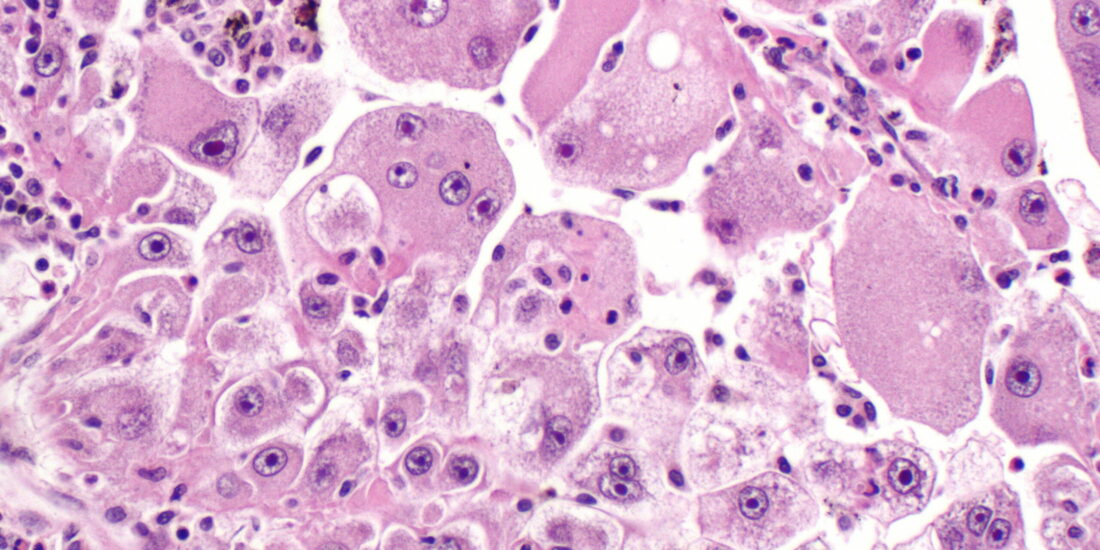Rett Syndrome and Fragile X Syndrome: Different Etiology With Common Molecular Dysfunctions
By Snow Bach, Stephen Shovlin, Michael Moriarty, Barbara Bardoni, and Daniela Tropea Excerpt from the article published in Frontiers in Cellular Neuroscience, volume 15. 19 November 2021 Doi: https://doi.org/10.3389/fncel.2021.764761 Editor’s Highlights Abstract Rett syndrome (RTT) and Fragile X syndrome (FXS) are two monogenetic neurodevelopmental disorders with complex clinical presentations. RTT is caused by mutations in the […]
Continue ReadingThe Sigma-2 Receptor/TMEM97 Agonist PB28 Suppresses Cell Proliferation and Invasion by Regulating the PI3K-AKT-mTOR Signalling Pathway in Renal Cancer
By Bo Zhan, Zhe Zhang, Chiyuan Piao, Xiao Dong, Yang Du, Chuize Kong, and Yuanjun Jiang Excerpt from the article published in the Journal of Cellular and Molecular Medicine, 16 November 2021 https://doi.org/10.1111/jcmm.17047 Editor’s Highlights Renal cancer is a malignancy that increases the burden of human cancers and has a poor prognosis rate, and there are […]
Continue ReadingNuclear and cytoplasmic huntingtin inclusions exhibit distinct biochemical composition, interactome and ultrastructural properties
By Nathan Riguet, Anne-Laure Mahul-Mellier, Niran Maharjan, Johannes Burtscher, Marie Croisier, Graham Knott, Janna Hastings, Alice Patin, Veronika Reiterer, Hesso Farhan, Sergey Nasarov, and Hial A. Lashuel Excerpt from the article published in Nature Communications, volume 12, Article number: 6579 (2021) DOI: https://doi.org/10.1038/s41467-021-26684-z Editor’s Highlights Huntington’s disease (HD) is an autosomal dominant genetic and progressive neurodegenerative disorder caused by the abnormal […]
Continue ReadingThe Sigma-1 Receptor and the HINT1 Protein Control Alpha2Delta-1 Binding to Glutamate NMDA Receptors: Implications in Neuropathic Pain
by Rodríguez-Muñoz M, Cortés-Montero E, Onetti Y, Sánchez-Blázquez P, Garzón-Niño J. Excerpt from the article published in Biomolecules. 2021 Nov 12;11(11):1681. doi: 10.3390/biom11111681. PMID: 34827679; PMCID: PMC8615847. Editor’s Highlights Abstract Nerve injury produces neuropathic pain through the binding of α2δ1 proteins to glutamate N-methyl-D-aspartate receptors (NMDARs). Notably, mice with a targeted deletion of the sigma 1 […]
Continue ReadingPGRMC1 Promotes Progestin-Dependent Proliferation of Breast Cancer Cells by Binding Prohibitins Resulting in Activation of ERα Signaling
By Yingxue Bai, Marina Ludescher, Gereon Poschmann, Kai Stühler, Martine Wyrich, Julia Oles, André Franken, Mahdi Rivandi, Anna Abramova, Florian Reinhardt, Eugen Ruckhäberle, Dieter Niederacher, Tanja Fehm, Michael A. Cahill, Nadia Stamm, and Hans Neubauer Excerpt from the article published in Cancers 2021, 13, 5635. 11 November 2021, DOI: https://doi.org/10.3390/cancers13225635 Editor’s Highlights Progesterone receptor membrane component 1 […]
Continue ReadingThe Sigma-1 receptor is an ER-localized type II membrane protein
By Neeraj Sharma, Chaitanya Patel, Marina Shenkman, Amit Kessel, Nir Ben-Tal, Gerardo Z. Lederkremer Excerpt from the article published in Journal of Biological Chemistry, 297, 5, 101299, November 2021 DOI: https://doi.org/10.1016/j.jbc.2021.101299 Editor’s Highlights The Sigma-1 receptor (S1R) is a small transmembrane protein (25 KDa), which is localized predominantly in the endoplasmic reticulum (ER), preferentially at the […]
Continue ReadingClosed-state inactivation and pore-blocker modulation mechanisms of human CaV2.2
By Yanli Dong, Yiwei Gao, Shuai Xu, Yuhang Wang, Zhuoya Yu, Yue Li, Bin Li, Tian Yuan, Bei Yang, Xuejun Cai Zhang, Daohua Jiang, Zhuo Huang, and Yan Zhao Excerpt from the article published in Cell Reports, Volume 37, Issue 5, 2021, 109931, ISSN 2211-1247 https://doi.org/10.1016/j.celrep.2021.109931 Editor’s Highlights N-type voltage-gated calcium (CaV) channels mediate Ca2+ influx at presynaptic […]
Continue ReadingRevisiting the sigma-1 receptor as a biological target to treat affective and cognitive disorders
by Kinga Sałaciak, Karolina Pytka Excerpt from the article published in Neuroscience & Biobehavioral Reviews Volume 132, January 2022, ISSN 0149-7634, https://doi.org/10.1016/j.neubiorev.2021.10.037. Editor’s Highlights Sigma-1 receptors are unique therapeutic targets modulating the activity of various proteins and systems in the organism. Preclinical studies reported that sigma-1 receptor expression correlates with the clinical manifestation of disease. […]
Continue ReadingIn vivo rate-determining steps of tau seed accumulation in Alzheimer’s disease
by Georg Meisl, Eric Hidari, Kieren Allinson, Timothy Rittman, Sarah L. DeVos, Justin S. Sanchez, Catherine K. Xu, Karen E. Duff, Keith A. Johnson, James B. Rowe, Bradley T. Hyman, Tuomas P. J. Knowles, David Klenerman Excerpt from the article published in SCIENCE ADVANCES• 29 Oct 2021• Vol 7, Issue 44• DOI: 10.1126/sciadv.abh1448 Editor’s Highlights […]
Continue ReadingTargeting strategies for oxaliplatin-induced peripheral neuropathy: clinical syndrome, molecular basis, and drug development
By Yang Yang, Bing Zhao, Xuejiao Gao, Jinbing Sun, Juan Ye, Jun Li, and Peng Cao Excerpt from the article published in Journal of Experimental & Clinical Cancer Research volume 40, Article number: 331 (2021), Published: 22 October 2021, DOI: https://doi.org/10.1186/s13046-021-02141-z Editor’s Highlights Chemotherapy-induced peripheral neuropathy (CIPN) is a serious clinical problem caused by cytotoxic drugs that cause different pathologic insults to […]
Continue Reading









